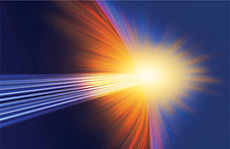Global from the get-go?
 |
|
Experiments in particle physics have decades of experience as thoroughly international collaborations. Can the giant accelerators that power these experiments make the leap to go global as well?
|
At a recent meeting of scientists at CERN on the border of France and Switzerland, a physicist recalled words of wisdom imparted to him by a professor of literature: “Physics is wonderful,” the professor said. “At least it teaches scientists to speak French.”
Although the comment elicited a chorus of self-deprecating proclamations about physicists’ language skills, it did highlight the reputation physicists have earned for working together across borders. This model of international collaboration has been the norm among experimentalists like those at the meeting for decades. Thousands of scientists from dozens of countries now spend their days and nights at CERN, the laboratory that hosts the Large Hadron Collider, the world’s highest-energy particle accelerator. The US Department of Energy and National Science Foundation contributed $531 million to the construction of the collider and its experiments, and 1700 US scientists are involved today. Similarly, experiments at Fermilab’s Tevatron can cite decades of collaboration among scientists worldwide speaking nearly 100 languages.
But the practice of collaborating internationally to design and construct the enormous accelerators that power these experiments has emerged only recently. And the world’s next big, one-of-a-kind particle collider will require even greater cooperation than any of those that preceded it.
Scientists from across the globe contributed to building accelerators such as HERA at DESY laboratory in Germany, RHIC at the DOE’s Brookhaven National Laboratory and the LHC at CERN. But in each of those cases, one laboratory drove and managed the project and operated the accelerator. Scientists are now working on ways to govern projects as global communities from the beginning.
These giant particle colliders take at least a decade to build and are meant to last for decades more. Their costs reach multiple billions of dollars. In practice, this dictates building only one global machine at a time, which means all regions must work together in order to participate in scientific progress. The process of building an international collaboration and agreeing on the location of a new machine takes time.
Read more
-- Kathryn Grim
|